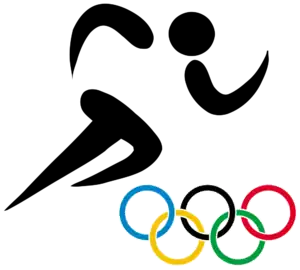Athletics at the 2020 Summer Olympics – Men's hammer throw
The men's hammer throw event at the 2020 Summer Olympics is scheduled to take place between 2 and 4 August 2021 at the Japan National Stadium.[1] Approximately 35 athletes are expected to compete; the exact number will depend on how many nations use universality places to enter athletes in addition to the 32 qualifying through distance or ranking (no universality places were used in 2016).[2]
| Men's hammer throw at the Games of the XXXII Olympiad | |
|---|---|
 Olympic Athletics | |
| Venue | Japan National Stadium |
| Dates | 2 August 2021 (qualifying) 4 August 2021 (final) |
| Competitors | ~35 from ~25 nations |
Background
This will be the 28th appearance of the event, which has been held at every Summer Olympics except the first in 1896.
Paweł Fajdek of Poland is the four-time reigning World Champion (2013, 2015, 2017, and 2019), has qualified, and is likely to be a favorite in Tokyo.
Qualification
A National Olympic Committee (NOC) could enter up to 3 qualified athletes in the men's hammer throw event if all athletes meet the entry standard or qualify by ranking during the qualifying period. (The limit of 3 has been in place since the 1930 Olympic Congress.) The qualifying standard is 77.50 metres. This standard was "set for the sole purpose of qualifying athletes with exceptional performances unable to qualify through the IAAF World Rankings pathway." The world rankings, based on the average of the best five results for the athlete over the qualifying period and weighted by the importance of the meet, will then be used to qualify athletes until the cap of 32 is reached.[2][3]
The qualifying period was originally from 1 May 2019 to 29 June 2020. Due to the COVID-19 pandemic, the period was suspended from 6 April 2020 to 30 November 2020, with the end date extended to 29 June 2021. The world rankings period start date was also changed from 1 May 2019 to 30 June, 2020; athletes who had met the qualifying standard during that time were still qualified, but those using world rankings would not be able to count performances during that time. The qualifying time standards could be obtained in various meets during the given period that have the approval of the IAAF. Both outdoor and indoor meets are eligible. The most recent Area Championships may be counted in the ranking, even if not during the qualifying period.[2][4]
NOCs can also use their universality place—each NOC can enter one male athlete regardless of time if they had no male athletes meeting the entry standard for an athletics event—in the hammer throw.[2]
Competition format
The 2020 competition will continue to use the two-round format with divided final introduced in 1936. The qualifying round gives each competitor three throws to achieve a qualifying distance (not yet set; 2016 used 76.50 metres); if fewer than 12 men do so, the top 12 will advance. The final provides each thrower with three throws; the top eight throwers receive an additional three throws for a total of six, with the best to count (qualifying round throws are not considered for the final).[5]
Records
Prior to this competition, the existing world, Olympic, and area records are as follows.
| World record | 86.74 | Stuttgart, Germany | 30 August 1986 | |
| Olympic record | 84.80 | Seoul, South Korea | 26 September 1988 |
| Area | Distance (m) | Athlete | Nation |
|---|---|---|---|
| Africa (records) | 81.27 | Mostafa Al-Gamel | |
| Asia (records) | 84.86 | Koji Murofushi | |
| Europe (records) | 86.74 WR | Yuriy Sedykh | |
| North, Central America and Caribbean (records) | 82.52 | Lance Deal | |
| Oceania (records) | 79.29 | Stuart Rendell | |
| South America (records) | 78.63 | Wagner Domingos |
Schedule
All times are Japan Standard Time (UTC+9)
| Date | Time | Round |
|---|---|---|
| Monday, 2 August 2021 | 9:00 | Qualifying |
| Wednesday, 4 August 2021 | 18:30 | Final |
References
- "Athletics Competition Schedule". Tokyo 2020. Retrieved 29 January 2021.
- "Qualification System – Games of the XXXI Olympiad – Athletics" (PDF). IAAF. Retrieved 31 March 2019.
- "IAAF to follow other sports with world ranking system for athletes". BBC Sport. 7 March 2018. Retrieved 2 August 2018.
- "Olympic qualification period suspended until 1 December 2020". World Athletics. 6 April 2020. Retrieved 9 April 2020.
- "Athletics Explanatory Guide". Tokyo 2020. August 2019.